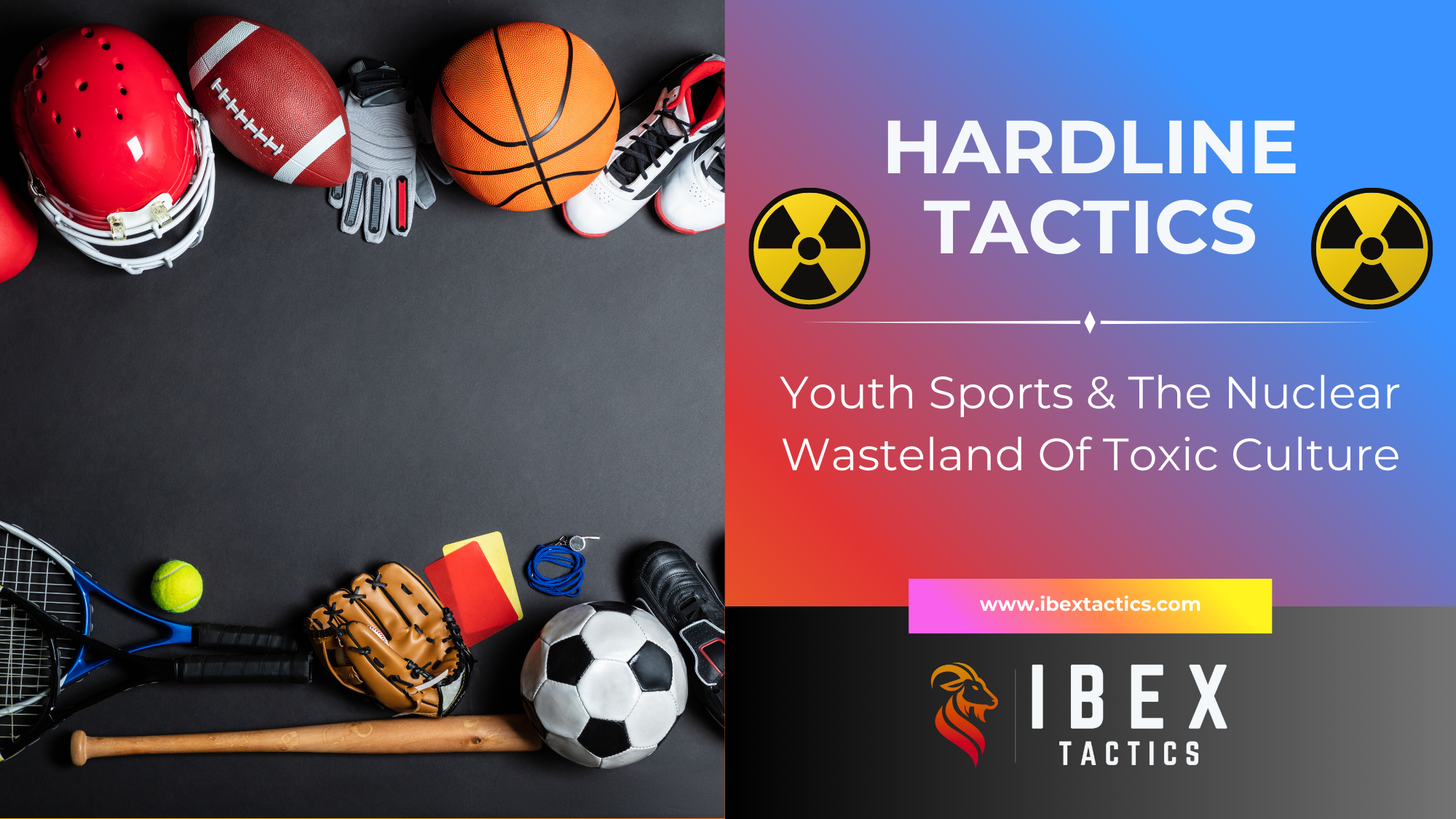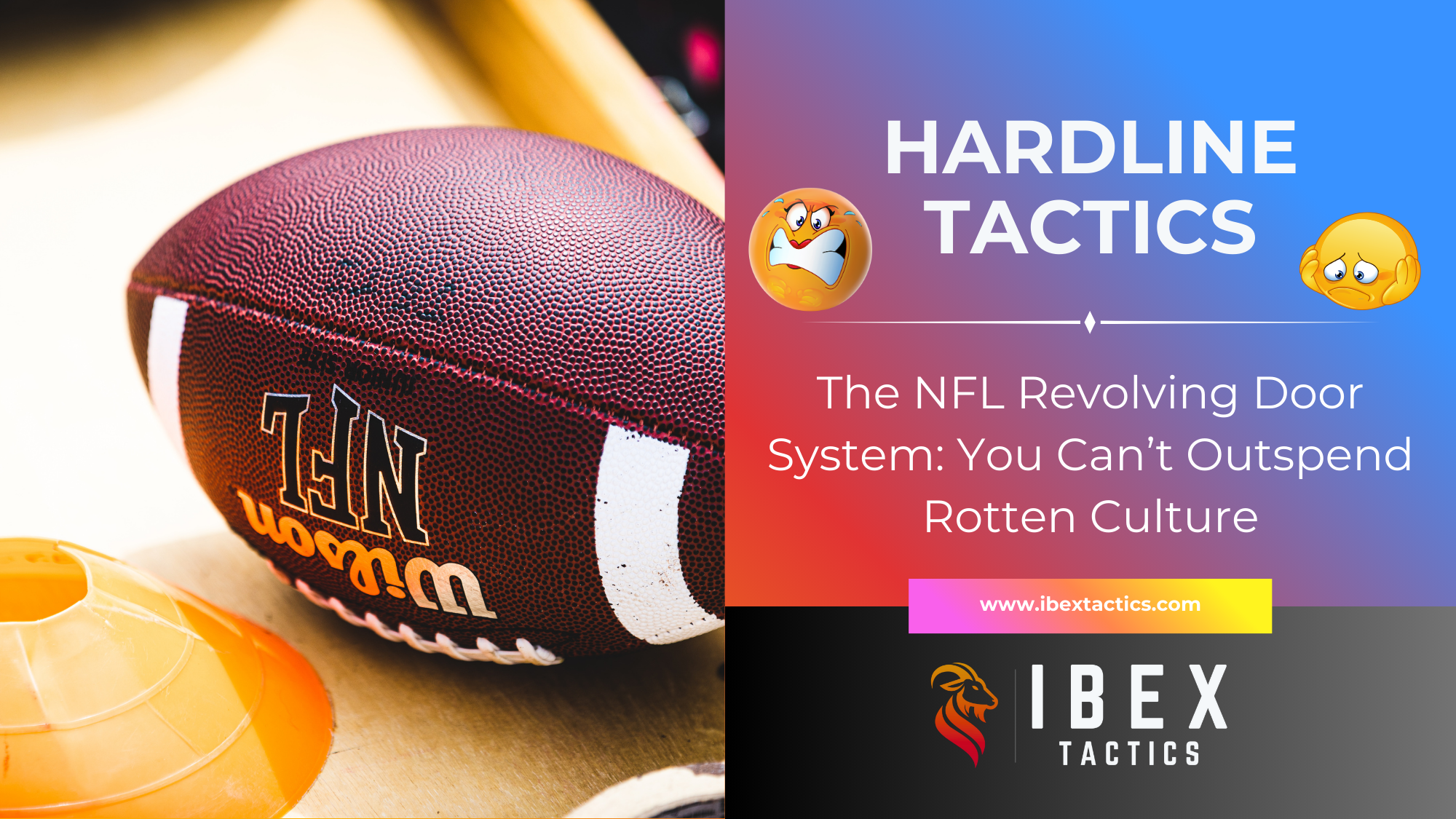What Are the KPIs That Prove Team Culture Development ROI?
Culture is widely recognized as an important trait that defines how successful or unsuccessful teams are but is considered a “soft” science because most leaders do not know how to measure it. This guide provides a no-nonsense framework for transforming organizational culture into measurable, defensible Key Performance Indicators (KPIs). We detail specific, observable signals of team health (e.g., cross-functional response times, belonging-cues, etc.) and show you how to rigorously link them to critical operational outcomes: system availability (MTTR, MTTA) and win rate.
published on 11/7/25, written by Ben Foodman CMPC, LCSW, CSCS & Alex Bolowich MS, CMPC
About The Authors
Ibex Tactics, LLC was founded by Alex Bolowich & Ben Foodman. Ibex Tactics LLC is dedicated to providing science-driven solutions to help corporate & sports teams build resilient cultures & leaders. Before starting the company, Alex and Ben were working with athletes & teams on an individual basis, helping them improve their mental performance using evidence-informed, cutting-edge sport psychology-based interventions. They have extensive experience working with athletes and teams competing in the NFL, NBA, NASCAR, IMSA, INDYCAR, MLS, as well as the SEC & ACC. Their work has been published in peer-reviewed articles such as the Association for Applied Sport Psychology (AASP) & the National Strength & Conditioning Association (NSCA). They have advanced training in exercise science, psychotherapy, motor learning, sport psychology and they are both Certified Mental Performance Consultants (CMPC) through AASP.
Why Does Culture Need a Spreadsheet?
Culture requires a spreadsheet because transforming organizational health into measurable, defensible Key Performance Indicators (KPIs) is the only way to calculate the true Return on Investment (ROI) and justify its strategic development. This approach moves analysis beyond subjective "vibes" to observable, repeatable behavioral data, which is essential for C-suite buy-in. Unfortunately, many these leaders are hesitant to invest in developing this aspect of their organization because for these individuals, culture is more about what you feel rather than what you know about a team. But here at Ibex Tactics, we believe that the key influencers and trailblazers need to abandon “the vibes” and move with us into the 21st century accurately conceptualizing and quantifying what a performance-optimized culture really is.
We define a performance-optimized culture as shared behaviors amongst a group of people that are working to accomplish the same mission. In truth, we actually agree with the leaders that believe culture is the bedrock of any successful team, but the reason these influencers don’t invest in culture development is because they didn’t have the strategies or tools to justify the ROI on this…until now. This is the gap we're closing. We're moving beyond slogans to observable, repeatable behavioral data. True Culture ROI is the net performance lift—in uptime, speed, on the field performances and revenue—that you can directly attribute to how people work together.
This post is your playbook for defining Culture KPIs which will accomplish the following:
Link Culture KPIs to hard operational and financial metrics.
Run the analysis without falling for correlation-as-causation traps.
By the end, you will understand:
Which behavioral signals that build a performance-optimized culture actually predict team performance.
How to create a credible link between team cohesion and system availability.
The crucial lag windows that connect cohesion improvements to higher sales win rates.
How Do We Measure culture Without Relying on "Vibes"?
We measure team culture by quantifying Cohesion. We do this because this approach is not gauged by surface-level sentiment but rather by measuring behavioral signals like cross-functional response times, the presence of security-inducing belonging cues, and shared clarity of language and mission. In the Canadian Journal of Sports Sciences, the authors describe Cohesion as an emergent state that reflects the tendency for a group to stick together and remain united in the pursuit of its instrumental objectives and/or for the satisfaction of member affective needs.
Ultimately, Cohesion is not about happy hour attendance; it’s about fast, reliable feedback across organizational boundaries. We must measure the crossings, not the slogans. Research published in the Journal for Applied Sport Psychology further supports this due to the fact that teams that exhibit high social cohesion compared to those with low social cohesion have higher levels of excitement and better performance outcomes. So, what are the metrics that teams need to measure when first identifying cohesion performance?
Cohesion KPI Measurement & Predictive Value:
Scale: The size of an organization directly impacts how cohesive teams are capable of being. Larger organizations need to create smaller teams within the ecosystem to solidify cohesion and need efficient workflows (most of which can be solved with AI agents like ServiceNow). However, AI agents can’t help with the human-to-human communication workflows.
Security: In order for cohesion to take place, group members need to be systematically sending belonging cues that solidify trust in team members capabilities and encouraging autonomy. This is especially important for organizations that rely on decentralized command structures. AI agents can’t solve this.
Language: Specific organizational cultures have nuanced methods of communication and language. Identifying those constructs and understanding how effectively communication transmits across the organization helps maintain cohesion. An example of this would be how professional racecar teams communicate during competition preparation compared to collegiate football teams.
Identity: The identity of an organization can be defined as the traits that make the team unique from its’ counterparts. This can include values, and beliefs, but ultimately is reflected through behaviors that are intrinsic to the organizations unique DNA.
Mission: Finally, the mission identifies what the ultimate purpose is for the organization…essentially answering why the team exist. The answer to why a team exists should unify the group, and then all previous pillars mentioned (security, scale, language & identity) solidify team cohesion.
Fortunately, we are not operating in the dark in terms of quantifiable outcomes associated the performance of culture and cohesion. For instance, in the book The Culture Code, by Daniel Coyle, the author presents ample evidence as to how team cohesion leads to increased sales, sports performance wins and succesful military campaigns. There is also research that further supports the ROIs on culture and team cohesion development. In a recent article posted in the Harvard Business Review, the authors cite research that demonstrated how employers that focused on culture development and team cohesion strategies saw increased retention of employees, hire sales, and increase employee productivity. But why is it important to constantly look at the performance metrics behind culture and team cohesion development?
How Does Team Cohesion Improve System Availability?
Cohesion must be linked to System Availability metrics (like MTTR and MTTA) because a strong culture is not about preventing setbacks, but about creating systems for fast, resilient recovery. High-cohesion teams exhibit rapid communication and reliable coordination during failures, drastically reducing downtime and accelerating the mean time to recover.
This can feel unnatural to leaders because over the years they have been fooled into one of biggest misconceptions about sport psychology services (team culture & psychological performance development) which is that people like us are supposed to provide them with tools that prevent setbacks from ever happening. The reason people think this is because sport psychology and organizational psychology services have promoted the message that professionals in our field are able to create “unbreakable teams” and “invincible mindsets”. Based on our work with professional sports teams, this is complete bullshit and is not even an effective process to implement. Human systems are not static environments, nor will they ever be. They are dynamic ecosystems that are constantly changing. As previously mentioned, the research supports that what we want to do is to have systems in place that speed up the time that occurs between a setback and recovery. Let’s dive deeper into why this is the case.
1. How Does Cohesion Impact Recovery Time (MTTR and MTTA)?
When there is broken team cohesion, organizations usually report the following symptoms: high turnover amongst employees/athletes, broken lines of communication, low morale, no macro-level buy-in, and worst of all…toxic team culture. All of these things lead to lost team cohesion which typically leads to isolation amongst important communication networks amongst teams. Broken communication lines therefore mean that important information is not flowing to where it needs to go, and when there is a setback, it can’t be fixed with the speed that it needs to be. All of this means less winning and less money getting into your bank account.
IBEX TACTICS EXPERIENCE: During our work with a professional racecar team, we saw different points of friction that were creating challenges in being able to forge system wide cohesion. When we work with complex systems, the first place we like to start is understanding what the underlying issue is, rather than just delivering a “mental toughness” team workshop. We do this first by administering one of our assessments which provides quantitative and qualitative data on team cohesion measuring 5 key metrics that we associate with performance-optimized cultures. When we first start working with organizations, we administer a pre-test to identify what the key problems are and create a priority index. We then customize solutions, integrate those systems in our work with the team, and then reassess in the post test if we have made improvements in both cohesion and team performance metrics. The charts below (C1A & C1B) demonstrate how our work with this particular team created alignment.
2. Does Cohesion Prevent Breakages (Change Failure Rate)?
The short answer to this question is yes. But why? As we previously stated in the Ibex Tactics Experience statement, we have seen that when cohesion is improved, organizational alignment is achieved.
When teams in both corporate and sports arenas have alignment in key areas of team cohesion, communication lines between key players remain open and problems get solved in a highly effective timeframe.
Again, the goal should not be to achieve 0 setbacks. The goal should be to shorten the time between setbacks and resetting.
Some leaders reading this might believe that these problems ultimately come down to having effective workflows and this can largely be solved through Artificial Intelligence agents. But a big part of increasing resetting after setbacks has more to do with broken human to human relationships rather than the former.
It’s true that creating easy workflows through human AI optimized teams create high productivity outcomes, but again, our research shows that productivity significantly increases when the focus is placed on broken human to human connection systems.
When these specific systems are fixed, winning and monetary gains increase.
Takeaway: Culture ROI is not a fairy tale when the connection is made between fast feedback (cohesion) and a reinforced human relationship bond.
IBEX TACTICS TIP: When you are assessing if there is broken team cohesion, understanding body language cues amongst team members is critical. In a previous article, we also cited important research conducted through the lens of Polyvagal Theory which emphasizes the importance of how body language signals (non-verbal cues) significantly affect the Vagus nerve in our bodies, which in turn affects our communication efficacy. This is called the social engagement system.
IBEX TACTICS TOOLS: When we administer our assessment (the ITA-40) we are able to visually see the quantitative and qualitative data associated with optimal team-cohesion metrics. Below you can see the pretest and posttest results from one of our previous clients. The chart on the left is the pretest, and the chart on the right is the posttest. When we achieved alignment at the end of our services, our client (a professional racecar team) literally saw increases in speed on the track, which they attributed to improved team cohesion.
Pretest (C1A) - the data shows how participants had misalignment scores related to certain aspects of team cohesion. This team was experiencing significant decreases in performance which was causing high turnover in vendors and sponsors.
Posttest (C1B) - the data shows how after Ibex Tactics coaches worked with participants on the key issues shown in the priority index, the organization achieved alignment and as a result had improved performances as well as low vendor and sponsor turnover.
Does Culture Predict Win Rate in sports & sales Revenue Teams?
Yes, team culture significantly predicts the long-term Win Rate in both sports and sales environments by strengthening organizational alignment, which optimizes execution. Cohesion improves communication channels, ensuring the team resets quickly after setbacks, directly translating into sustained competitive speed and monetary gains. Furthermore, as we move into the future, it may also very well be the most important metric that any organization can invest in for the following reasons:
Many jobs will be lost due to the impending recession along with the introjection of Artificial Intelligence into workflow systems.
Many teams will downsize, and team members will have increased responsibilities while collaborating with their human-AI counterparts.
As a result, the human-to-human connection will be the final “workflow” that AI will not be able to touch for the immediate future.
As such, those relationships will need to be monitored and fostered on a continuous basis if organizations are going to thrive in the new future we are heading into.
This perspective is not just the opinion of Ibex Tactics coaches but is also supported by independent leaders and key thought leaders. For example, in a recent article published in the Harvard Business Review, the authors cited research that showed the direct correlation between performance outcomes and a high-quality culture. Nonetheless, prospective clients always ask us for proof of concept and examples of action steps they can take to start helping their teams build a performance-optimized culture. The following are basic examples that we frequently discuss with teams (especially those in corporate and finance) to give them a quick win:
Pre-Sales/Product Consults: Track the percentage of opportunities that receive a logged consultation with a Product or Technical SME before the proposal is sent. High collaboration ensures the proposal solves the actual problem.
Proposal Iteration Velocity: Count the number of unique, internal stakeholders who contribute meaningful edits to the proposal document within 48 hours of a draft being created. More internal eyes mean less rework and a tighter narrative.
System-wide Reset Metrics: Measure the time it takes for your teams to reset from the moment a setback occurs to the moment it is resolved. Try to have systems in place that define and measure what a successful reset looks like in key performance situations.
Sanity Check: Many organizations that invest in culture development utilize an HR world view. This can understandably drive team leaders freaking bonkers. An increase in emoji use did not drive revenue; a tighter feedback loop that led to a better proposal did.
Frequently Asked Questions ABOUT Culture roi
-
Keep a mixed basket that covers connection, speed, and accountability:
Connection: examples can include cross-functional Slack thread rate, doc co-editing percent, skip-level 1:1 frequency. Ultimately, higher frequencies of communication are a good sign.
Speed: PR review within 24 hours, median Slack response in incident threads, time to schedule cross-team working sessions. The faster things get done, the more likely it is that teammates are connected to the mission.
Accountability: post-mortem completion rate, action item closure within 14 days, on-call handoff completeness. Essentially, you want your team members less concerned with failing and more concerned with owning and urgently correcting errors.
-
Analytics on these issues is critical, but they mean nothing without applied experience. You need folks like the coaches at Ibex Tactics who have been in the trenches and have directly experienced not just the wins but the pain of failure with elite teams. Furthermore, since Ibex Tactics coaches are independent contractors using standardized tools, you are getting unbiased feedback from outsiders.
-
The cheesy answer is ours. We use assessments that quantify the issues that we previously mentioned, but we even go a step further and provide a pretest, posttest analysis of critical performance metrics to see if there is a connection. Furthermore, we provide our clients with a 100% money back guarantee on our services if we do not deliver the outcomes you requested.
What Are The Final Steps For Making Culture a Defensible Asset?
So, what is the main takeaway from this article? Performance optimized cohesion shows up fast through cross-boundary feedback. Teams absolutely must measure these crossings, not slogans.
Your job as a leader is to create a system where this feedback is the default behavior, and then to track its’ impact on the bottom line. By defining the key Cohesion KPIs we discussed in this post and rigorously linking them to your performance outcomes, you shift the conversation from abstract belief to concrete, defensible strategy. Using assessments like ours is critical to understanding the WHAT and the WHY, but you then need to tie the solutions to performance metrics to discern if the priority index was accurate.
When someone asks why you're investing in team development, you'll have the data to show that it’s the difference between a high-performing team shipping smoothly and a frustrated team debugging production at 2 a.m. (not to mention, we give you the 100% money back guarantee offer if you don’t get the outcomes you want). With 0% risk solutions like the ones our Ibex Tactics coaches have described, the real question is what the hell are you waiting for?! Are you ready to dive in and get your team the edge you need in this new frontier we are entering into?! Check out the resources we offer below!






































